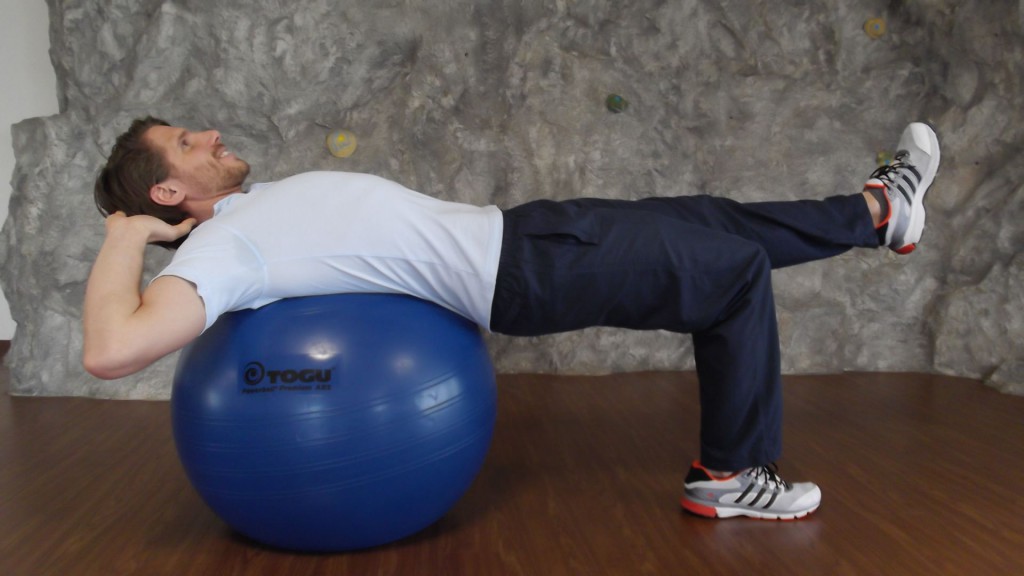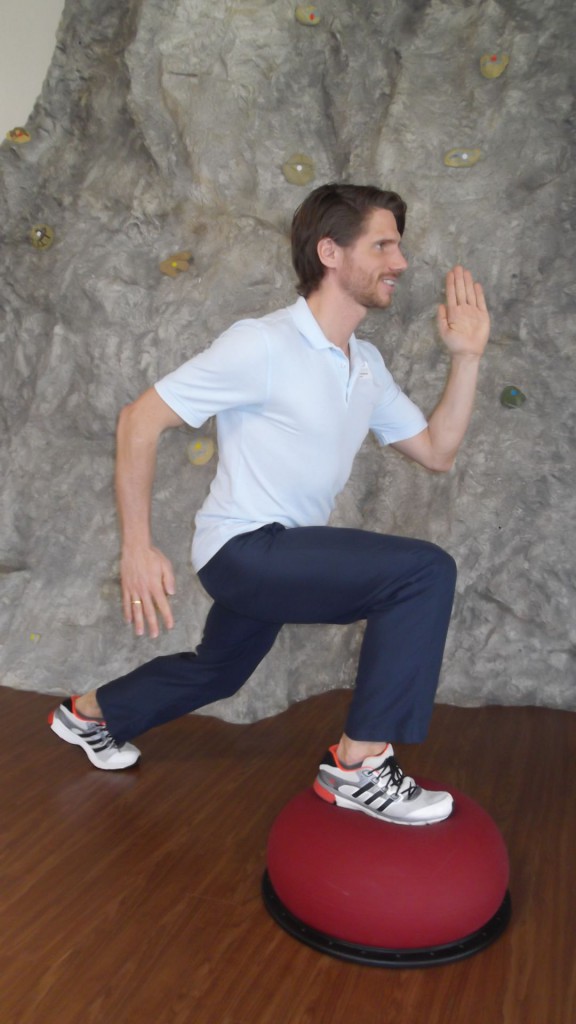Text: Michaela Kreitmair, MAS Physiotherapist
The Medical Park Chiemsee hospital is a recognised rehabilitation hospital for the specialist areas of orthopaedics, traumatology and applied sports medicine. It offers state-of-the-art diagnostic and therapeutic treatment options.
The hospital is the centre for sports medicine and applied performance diagnostics of the Bavarian Olympic base, licensed by the German Sports Federation. Top athletes from all winter sports, athletics and motor sports, such as Ronny Ackermann or Anni Friesinger-Postma are regular guests.
Within the frame of co-operation with the family business and training equipment manufacturer TOGU, which has been producing high quality, functional solutions for rehabilitation and therapy nearby since 1956, the therapists at Medical Park Chiemsee hospital work on sensorimotor functions, co-ordination and balance with their patients. When required, a therapist will introduce the equipment to the treating therapists.
By developing ADL Training, the Medical Park Group has been a trendsetter in the field of rehabilitation. The content of this training is re-learning the activities of daily living. Amongst other things, it is about regaining a secure feeling in activities at home as well as behaviour in traffic – whether as a pedestrian or driver – or realistically practising shopping.
With ADL Training as part of their Medical Park rehabilitation, patients find returning to daily life easier. Patients recover their freedom of movement, their confidence and therefore their love of life.
Balance Parcours with dynamic, i.e. moving surfaces is an important component in this process.
The advantages are clear to the therapists: The equipment delivers the initial activity when, for example, the patient is sitting on a Ballkissen and receives the task of lifting his/her legs. Every movement on the unstable surface is experienced as new, leading to more motivation for the patients. This promotes creativity in both the therapists and the patients. Initially, the patients feel insecure but, during the several weeks of their stay, they have the opportunity of developing these skills in particular. Many recognise the use of these small training units and return home with this new knowledge and the exercises for everyday life. The Gait Circle and the Gait School are other areas where the balance equipment is used.
A safety check for this kind of training equipment is absolutely essential. When it comes to gym balls, for example, we attach great importance to balls that are guaranteed not to burst, even when they are damaged and being used dynamically.
The co-operation model with TOGU includes endurance testing of equipment during therapy use.
This means that valuable insights for further development of the concept are gained together. Additionally, training opportunities in the area of physiotherapy are implemented jointly.
In one-to-one physiotherapy sessions, simple to highly complex movements and tasks can be carried out with little equipment use for all patients, regardless of age and fitness level, using different kinds of progression. The relevant treatment can sometimes start straight after an operation, e.g. for stabilising the spine, while performance increase is the focus for the training of top athletes. Instructions from the therapist are accepted more readily and implemented as homework during everyday life. This “Training plan for at home” is recognised by the patients as an additional service and therefore appreciated.









